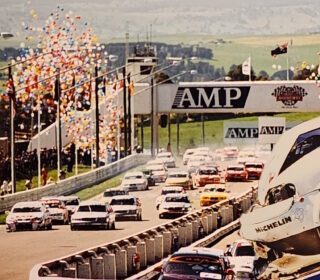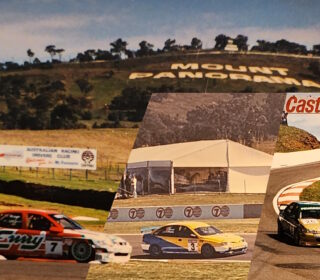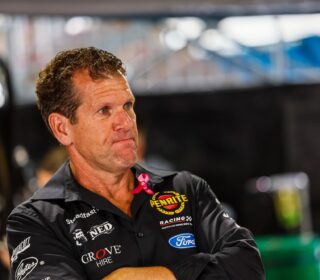Tucker, the Runoffs and the wild, wild West
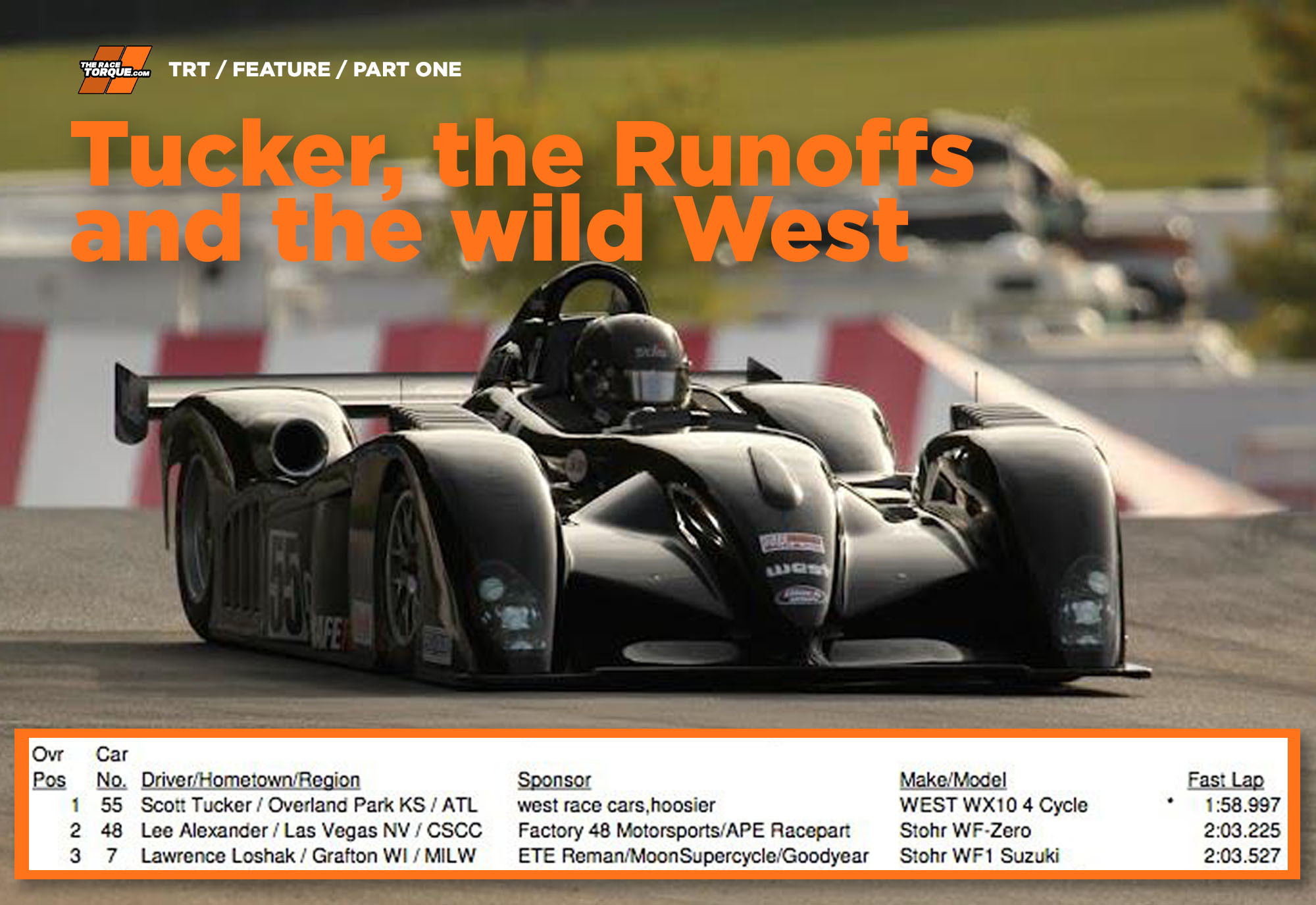
THIS IS the story of a team with no budget limitations, with brilliant people and a rich owner setting a target to win a car race, hang the cost.
It’s not well known as some stories of epic ingenuity or ridiculous spending the sport has produced – but it is every bit a thrilling tale of motorsport innovation and excess as the more famous ones you may already know.
It’s also the story of the remarkable racing car that emerged from it; an incredible piece of race car engineering that didn’t move goalposts, it smashed them down, put them through a shredder and spread them far and wide.
It’s also a story of a previously unknown Australian connection, revealed by The Race Torque for the first time.
This is the story of Scott Tucker, the Level 5 West and a motorsport engineering story that beggars belief.
SCOTT TUCKER
BORN in Kansas City, Missouri in 1962, Scott Tucker is a well-known name in the motorsport world.
Firstly, because he was a hugely successful driver in the American Le Mans Series and owner of the powerhouse Level 5 Racing outfit.
And secondly because he is currently serving a 16-year, 8-month sentence at Leavenworth Prison for defrauding customers more than US$1.2 Billion dollars via his payday loans business: Tucker and other conspirators being convicted on charges of money laundering, Racketeering and wire fraud, among other offenses.
Tucker is scheduled for release from prison in early 2032.
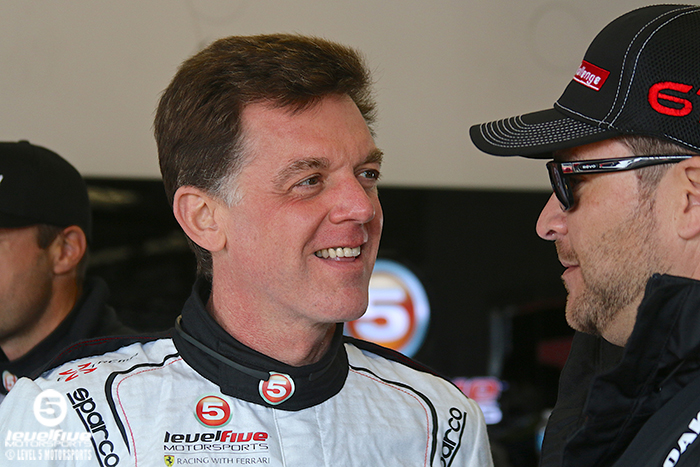
The Neftlix documentary series Dirty Money is well worth watching when it comes to understanding Tucker’s post-racing story.
As a racing driver, however, he was hugely successful and one of the better Amateur / gentlemen drivers of his time.
Tucker founded Level 5 Racing in 2008 as a vehicle to pursue his racing dreams, centered mainly around Sports Car racing in the United States.
After starting in Grand-Am competition and working his way through the ranks to a point where he was in serious GT machinery, tucker shifted to the American Le Mans Series in 2010 in the Prototype Challenge class, winning the title and the ALMS rookie of the year award.
The team moved to LMP2 the following year, purchasing a trio of Lola’s for their first main campaign in Prototype Racing’s second-top class.
After the Lola’s proved uncompetitive, Level 5 switched to a pair of Honda Performance Development prototypes for the second half of the season, winning the LMP2 championship.
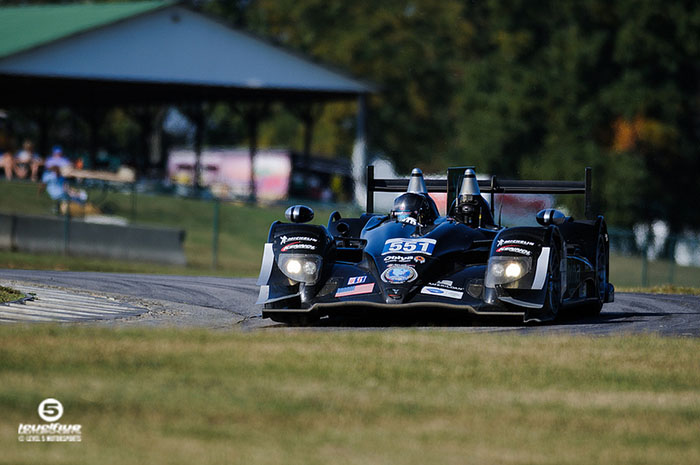
Running as the defending LMP2 Champions in 2012, Level 5 swept eight of the 10-round series in the LMP2 class to deliver Tucker the title, including a victory in the famous Sebring 12 Hours. The team would repeat the feat in 2013, Aussie Ryan Briscoe teaming with Tucker to win five of his eight LMP2 wins that year, in what would be the final season of the ALMS.
The team shifted to the merged United Sports Car Championship the following season, winning the 2014 Rolex 24 at Daytona in the GT Daytona class in a Ferrari 458, before the team withdrew from the series and ultimately closed its doors as Tucker’s legal issues closed in on his extracurricular activities.
According to the Driver Database, Tucker’s last races came in the Ferrari Challenge USA in 2015.
THE NEXT LEVEL
Writing in Road & Track Magazine in 2017, journalist Marshall Pruett described the somewhat unique approach Level 5 and Tucker himself took to their racing.
“Within sports-car racing, Tucker’s exploits with Level 5 Motorsports were filled with excess from the start, and as his presence grew in the sport, his eccentricities began to spill out in curious ways,” Pruett wrote.
“Painting a billionaire racing driver as a recluse might sound odd, but other than the time he spent behind the wheel, Tucker channelled his inner Howard Hughes and was rarely seen outside the confines of his mobile racing fortress. He gave the impression he either felt unwelcome in the paddock or that he’d be the source of derision from those who questioned the morality of how his fortune was earned. Rumors of payday loan improprieties followed Tucker throughout his time as a sports-car driver, which he likely knew and contributed to his bunker-like approach.
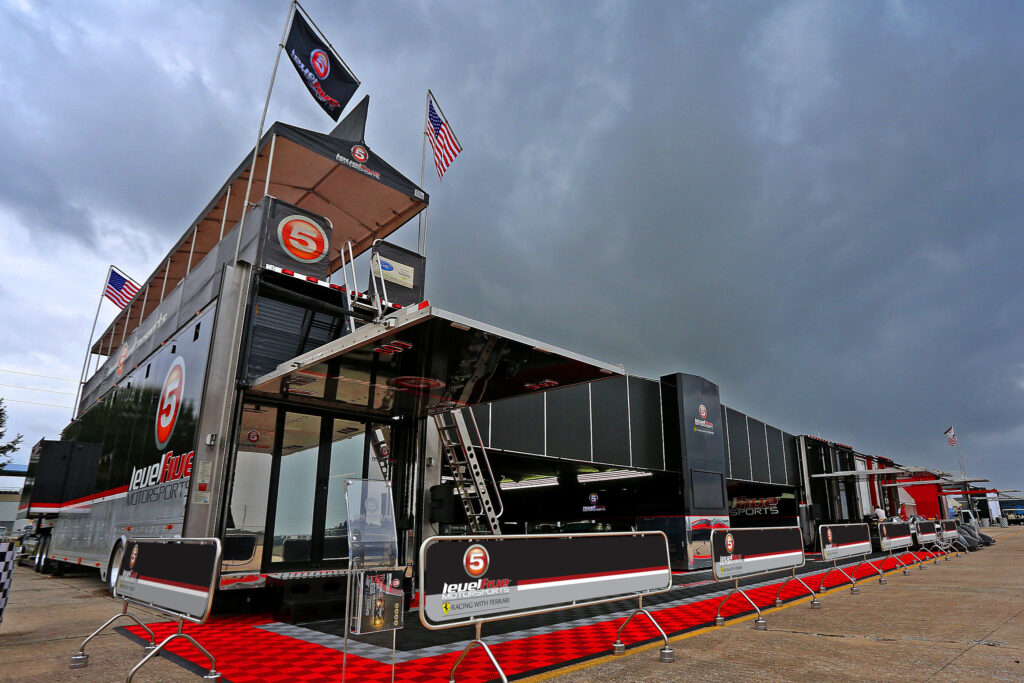
“And where other professional sports-car teams purchased transporters and equipment to create a mobile garage—ones with custom flooring, large awnings, and all the necessary tools for mechanics to service and prepare cutting-edge race cars—Level 5 had a compound that was genuinely foreboding, a stronghold of sorts. If the exterior wasn’t a clear sign fans weren’t welcome to walk up and get a closer look inside Level 5, the team made sure its paddock space was off limits by hiring one or more personal security guards to police ingress and egress.”
However former Level 5 Engineer Jeff Braun, one of the best in the game in the United States, painted Tucker as an owner who let his team do their job, refusing to micromanage but also never holding back on spending the money required.
They employed the very best people possible, paid well and on time and did whatever it took to win within the applicable rules.
It was never excess per se, Braun added, but the required budget was always there if things needed to be done that the team thought could improve their fortunes.
The mid-season switch from Lola LMP2 cars to the superior HPD alternative is perhaps the best case in point; It’s not often a team buys five LMP2 Protototypes in a single season.
And so is the following story – one that some might find a little hard to believe occurred at all.
WX10-ST01a
THE SPORTS CAR CLUB of AMERICA (SCCA) Runoffs are the mecca for club racers from across the United States.
Each year, more than a thousand competitors join at one location for a week-long festival that ultimately decides the national champions in the various club level racing disciplines contested across the fifty states.
Founded in 1964, the Runoffs are the pinnacle of amateur racing in America and routinely are the largest event on the racing calendar, outside the major NASCAR, IndyCar and IMSA professional-level events that dominate the headlines.
In 2012 they were held at the famous, stunning Road America circuit in Wisconsin, home to Indy Car Racing for decades and one of the ‘States most famous and impressive road courses – it’s 4.0-mile length flowing and turning through the woods with famous corners like the Carousel and Canada.
It was this location and a challenge from SCCA organisers that attracted Level 5 Racing – then a highly professional, well-funded and championship-winning team set up by Scott Tucker to manage his own racing passions – to launch an unprecedented campaign on the Runoffs.
It’s a tale that remains one of the most remarkable stories of gaining the fabled motorsport ‘unfair advantage’ since Roger Penske’s Ilmor ‘Beast’ – their remarkable, rule exploiting, 1100hp pushrod Indy Car engine developed in complete secrecy that crushed everyone at the 1994 Indianapolis 500.
Only this story hasn’t had books and documentaries produced about it.
2012 would mark the fourth time that the SCCA Runoffs had been contested at Road America and yet to that point, no driver in any car had dropped below the two-minute barrier.
When the SCCA challenged competitors to become the first to break that 120-second benchmark, it was Scott Tucker’s ears who perked up.
Little did they know what they had created.
Tucker’s Level 5 team quickly identified the D-Sports Racer class as the ideal place on which to launch their attack on the minute-fifties at Road America. The fastest cars – tubular framed, fiberglass bodied single-seat race cars that you will know in Australia from the Australian Prototype Series (And Sports Racer before it) – in the class were in the two minute, two-second window already, leaving little time to find.
With a good driver and a good team racing against weekend warriors, if very good ones, it would almost be a certainty that they would find the two seconds needed and crack the two minute barrier.
At this point, we need to be honest.
It is impossible for us to do justice to the full story of the extent to which Level 5 Racing took on this challenge; you simply must listen to the Dinner With Racers podcast (CLICK HERE) with the team’s then-chief engineer Jeff Braun, who recounts the full story, to get the true scope of how ridiculous this project truly was.
Still, it’s worth us offering up a brief summary here because some of the things they did defy belief.
In an eight-month program, led by veteran engineer Braun, Level 5 basically threw every resource they had to create the ultimate D-Sports racer with which to win the Runoffs, which would be contested over a single 13-lap race in September, 2012.
A standard, off-the-shelf West Race Car was purchased with the standard, 1000cc normally aspirated motorcycle engine.
The car was promptly delivered to Muiltimatic, the Canadian engineering firm famous in motorsport circles for everything from the construction of Ford’s GT Le Mans Program to secret-squirrel damper development for Formula One teams.
At Multimatic the car was put on the shaker rig and given swing tests to find the moment of inertia in the car, not the kind of stuff Billy Bob from Alabama was about to do to his similar West Sports Racer.
Muiltimatic also built an advanced computer simulation model – at a cost of approximately $250,000 – to enable the car to be developed and tested on the companies expensive driver-in-the-loop vehicle simulator.
Mark Hanford, the man famous for developing CART’s infamous ‘Hanford device’ for Superspeedway racing in the 1990s, headed up the aero program. He ensured the bodywork was laser scanned and put in a CFD (Computational Fluid Dynamics) system that used 44 computers running for 22 days in a bid to optimize the aero properties of the lithe little sports car.
Trick dampers, pinched from a certain energy drink-backed Formula One team that contracted Muiltimatic for development work, were seconded onto the car.
Everything was geared towards working out how to make the West go quicker than a 2m02 second lap at Road America, but this was club level racing on a Le Mans budget – and it didn’t stop there either.
Specialist engine tuners were brought on staff to find the ideal powerplant.
D-Sports Racer rules stated that the cars could run either 1000cc normally aspirated engines – producing about 200hp at full tilt – or run a Turbocharger but be limited to just 670cc. While the latter was initially disregarded (“How much power could you get from 670cc?” said Braun), after some investigation the Engine department felt that more than 300hp was possible.
All of a sudden, the turbo was back on the table and – after blowing up many of them – they found nearly 350hp out of two-thirds of a litre.
With driver, the West would weigh just 500 kilograms making a power to weight ratio something akin to an LMP1 car.
Hang the Runoffs – all of a sudden this off-the-shelf West had the power-to-weight ratio, the aero and the technology to be among the fastest racing cars in the United States.
Two cars were built: a ‘mule’ test car and then one called ‘Bronco’, which would be Tucker’s primary race car in his bid to dominate the Runoffs.
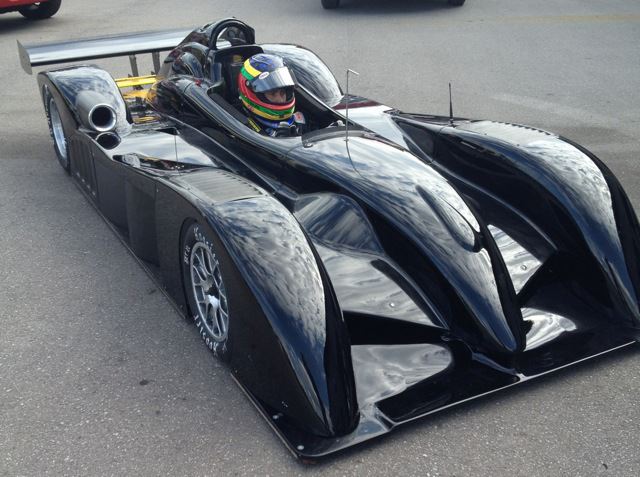
TESTING TIMES
AND THEN there was the testing program.
Three days were booked at Putnam Park Raceway in Indiana, before a further three days at Canada’s Calabogie Motorsport Park – a fast and flowing 5km long circuit in Ontario not dissimilar to Road America – where the Tucker West promptly destroyed the circuit’s outright lap record.
And then they went to Road America. They went to Road America four times.
They went to Road America for for a total of twelve days.
Having done much of the development work on the Muiltimatic simulator, Jeff Braun’s son Colin, who would go on to race NASCAR however at the time plied his trade as a highly rated Sports Car steerer, was handed the driving and development duties.
It’s worth reinstating the end goal here, which was to be the first car to go sub two minutes at the SCCA Runoffs at Road America. To do that, they needed to find two seconds and if they did, they’d probably destroy the field as well.
They found nearly ten seconds.
Ten.
According to Braun Senior, Colin Braun’s best time in testing was quick enough to put it on the front row of the American Le Mans Series race at Road America against fully-blooded LMP1 Prototypes, the kind of things that would win at Le Mans. It was miles quicker than the LMP2 cars of the time.
At Road America, you’d need an Indy Car to go quicker.
It was in a different league and it was properly, scary quick.
As Jeff Braun told the Dinner With Racers boys: “The car did 189 miles per hour into turn one, turn five and Canada Corner, where an LMP2 car would do 169 miles per hour. This was a Tube Frame Car! We had the data from the LMP2 cars to compare it.”
The ‘tube frame’ comment is worth noting. Unlike the LMP1 cars it could potentially out pace, the West remained of its original construction: A tubular steel chassis – think a Formula Ford – surrounding the driver and a lightweight fibreglass (or in this case, Carbon, but certainly not structural) body on top.
Shunt at Prototype speeds and you were going to be in a very bad way, if in a way at all.
Added Braun: “It was flat from Turn 8 (prior to Road America’s famous Carousel) all the way to Canada Corner and it did 172 miles per hour through the kink, which is higher than the top speed of the P2 car.”
Tucker came to test on the final day at Road America, and completed just a few laps – dropping into the 1m58s – before declaring himself well and truly scared, such was the performance the car was capable of.
Level 5 calculated that with a pro like Colin Braun driving, they would have won the 13-lap DSR Runoff by nearly two laps.
Penske’s secret Indy Ilmor might have been ‘The Beast’.
But ‘Bronco’ was a bloody nuclear weapon at a fight between people with bows and arrows.
THE RUNOFFS
AT NO point throughout the 13-lap DSR National Championship race at Road America did it look like Tucker and the ultimate West would be beaten.
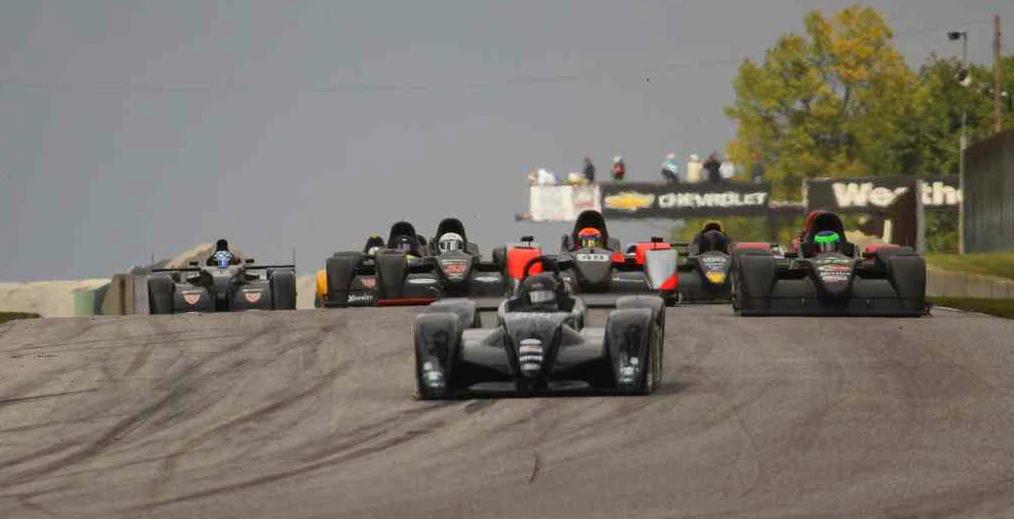
In qualifying, Tucker’s pole-winning lap of 1m58.594s not only assured him of pole position by nearly two seconds but re-set several SCCA records in the process.
The lap was the first ever under two minutes in SCCA competition at Road America – breaking a 56-year-old existing benchmark – and at the time stood as the eighth quickest lap recorded by any genre of racing at the fabled 4.08-mile circuit in Northern Wisconsin.
He led every lap of the finale’, winning by 34 seconds and setting the first sub two-minute lap in racing conditions at an SCCA event at Road America.
Despite greasy conditions and the ongoing threat of rain that never quite eventuated, Tucket smashed the smallish DSR field. Aside from a visible acceleration advantage, the car was better in every other area, too.
It was as crushing a victory as you would expect given the investment and brainpower that went into developing the WX10 ST01a.
“I really owe it to the whole team. My job’s the easy part,” Tucker said following his dominant win.
“We worked on this the whole year and had a couple of goals. One was to go under two minutes and the other obviously was to win the race.”
“All of those guys are engineering guys, they’re all car enthusiasts, they all have thought through this formula and this equation for many years,” added Level 5 Racing Program Manager, Ed Zabinski.
“When it comes to the Sports Racer class in SCCA, we’re the new guys. For us to be able to come out and develop this car from a West WX10 and turn it into a WX10/ST01a is pretty amazing. We had some big brains working on this project.”
The reception was, naturally mixed: the achievement was incredible but also somewhat akin to taking a knife to a gun fight. As Jeff Braun told the Dinner With Racers Podcast: “Of the 20 guys in the field, 5 were mad and 15 were saying ‘This is the coolest thing I’ve ever seen.
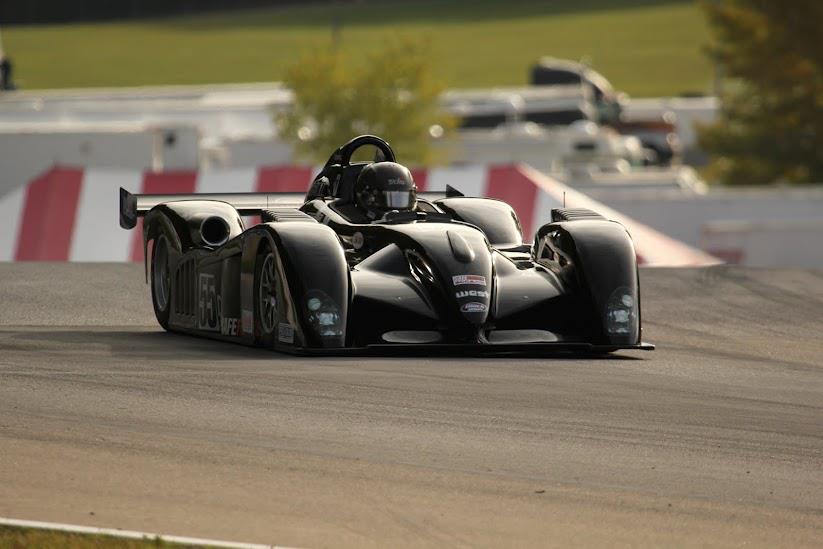
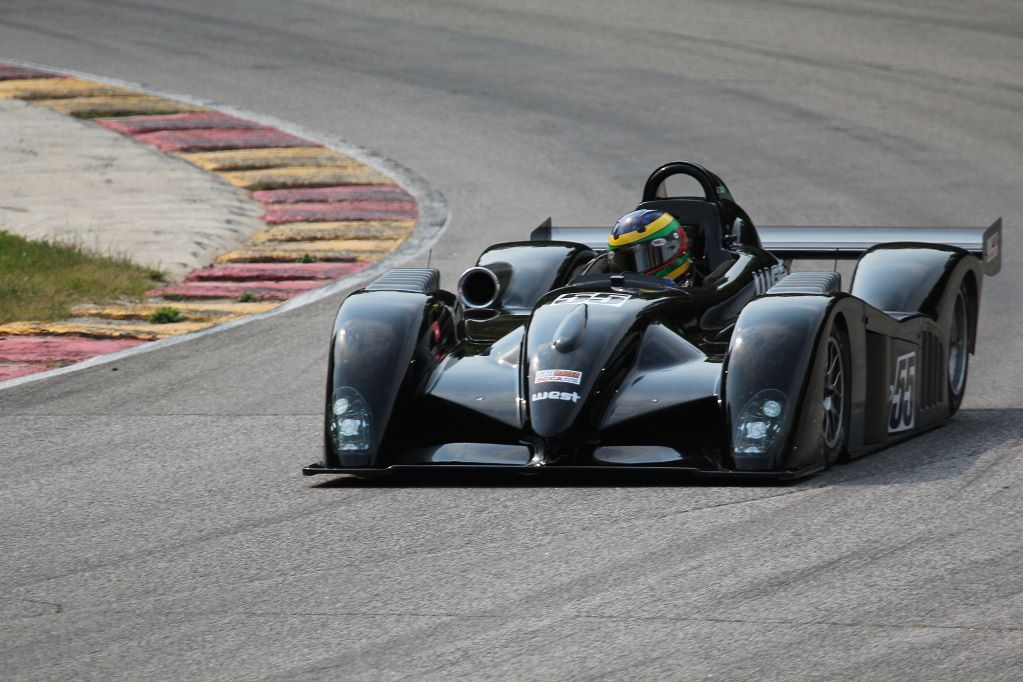
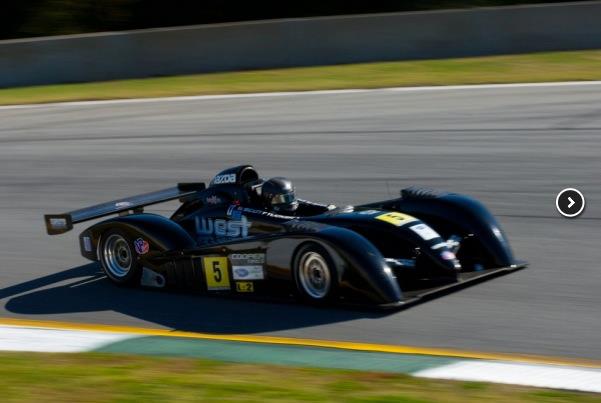
“I was standing in front of the car and it was there I was thinking that ‘this is not what this event should be about’.”
Level 5 Racing had 15 people on site to run the car. The SCCA rules stated that there could be no tyre warmers on the grid – so they ran a trio of generators behind the fence separating the formation area from the paddock, each of them heating a set of tyres; one set of slicks, one of intermediates and one set of wets.
While husband and wife teams sat and watched, the Level 5 team sat prior to the race with the car on jacks, waiting for the last possible moment at which to throw the tyres on. It took two people with laptops to fire the car and it even took people to turn it off – if you didn’t follow the correct procedure, so highly strung was the little turbocharged engine that it would blow up.
The runoffs would be the last time the car would run at speed: Tucker and the Level 5 team focusing their energies for the remainder of the year on their existing American Le Mans Series program.
The Dinner With Racers Podcast with Jeff Braun is a remarkable story in its own right and worth retelling here, but the real reason we’re offering up this incredible yarn is because the podcast ended with something that got our attention.
When asked where the car ended up, Braun uttered the following sentence.
“That car has now been sold to someone in Australia,” he said.
“I don’t know what they’re doing with it. But you could not run that car.”
To us that seemed like a challenge. Where was the car? Who owned it? Did it race? We set the TRT network out to work and remarkably, it didn’t take long to get some answers.
Oh yeah: we found it.
And you’d better believe it definitely ran. There’s another chapter to this story.
IN PART TWO: Coming tomorrow, we reveal for the first time where the Tucker West landed, explain its story since, where the car resides now and what is in store for its future.



